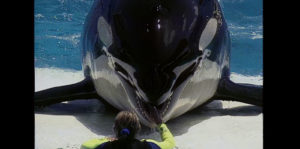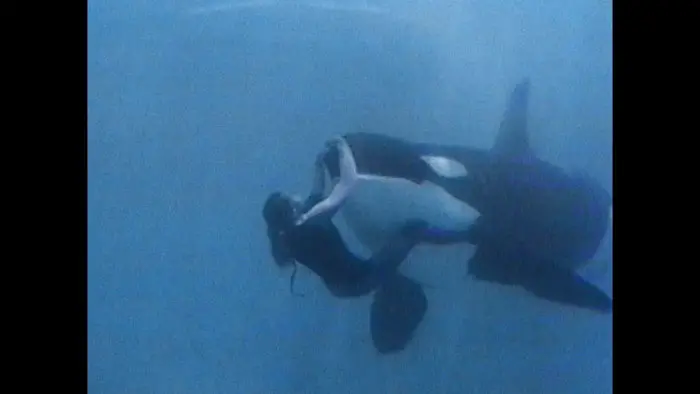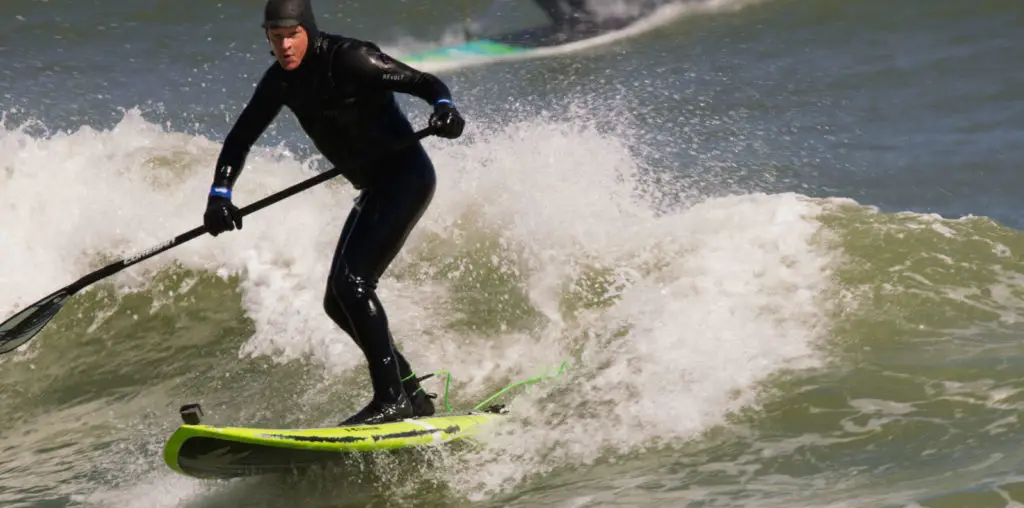
Documentary filmmakers Simon Schneider and Sarah Sharkey Pearce’s Resident Orca is a survival story about Southern Resident killer whale Sk’aliCh’elh-tenaut, also known as Lolita or Tokitae. Specifically, the film chronicles the efforts to return her to her pod in the Salish Sea from five decades of living and performing at the Miami Seaquarium. In a dedicated rescue effort by matriarchal leaders Squil-le-he-le, Raynell Morris, and Tah-Mahs, Ellie Kinley, of Lummi Nation, the Lhaq’temish, or People of the Sea, along with a former Lolita Seaquarium trainer, NFL football team owner, a billionaire philanthropist, and killer whale experts, the documentary tells a heartwarming but heart-wrenching story that is a mirror to the human and natural world.
The Salish Sea in the Pacific Ocean, located in British Columbia and Washington state, is where Lolita, captured in the 1970s for marine park entertainment, was separated from her mother as a baby. Not only was this captured on film and photographed, but this horrific episode had significant consequences for the survival of the Southern Resident killer whale population, which today exists in the low 70s, in decline, and since 2005 has been listed under the Endangered Species Act. Among other factors contributing to what might be extinction for this particular group of killer whales are the reduction of salmon, increased noise and disturbance of sea vessels, and water pollution.

“…a survival story about Southern Resident killer whale Sk’aliCh’elh-tenaut…and the efforts to return her to her pod in the Salish Sea…”
As Schneider and Pearce unfold Lolita’s story and the intimate connection of the Lummi Nation to orcas, it becomes clear that Lolita’s bond to humans is extensive from a Miami news reporter and several others who cannot shake their love and passion for this incredible sea creature. This connection is the premise of the Lummi Nation and why tribal leaders Raynell and Ellie refuse to let up their fight to bring Lolita home to her mother and birthplace—one way or another.
The time and energy devoted to Resident Orca is well received from an understanding of aquarium business and entertainment through archival footage and images combined with interviews and on-location filming where Lolita managed to survive in a tiny tank, exposed to the sun and living in southern ocean waters, which was very different from her origins. The exposure of capturing her and her pod, so unknown to many, was highly effective in providing a clear vision of how our existence today as a planet in jeopardy connects to greed and exploitation. It is almost too difficult to watch and ingest, as who could believe this inhumane treatment was possible and happened? Still, the reality of the more recent images revealing the decay of the Seaquarium and the many drone shots of a lonely and imprisoned Lolita say it all.
Resident Orca has many metaphors and parallel storylines on humanity and the natural world, as well as matriarchs and longevity, as we watch the relentless efforts of Raynell and Ellie, even to see Lolita just once. Yet, after 53 years in captivity, Lolita, in a small, decrypt marine tank in Miami, in failing health, performs for her saviors and loved ones, sending a sublime message of life and connection. However, what makes Resident Orca a lasting vision is the beautiful orca footage filmed throughout the Salish Sea underwater and above, capturing the Southern Residents moving in unison through the water as a pod, a tribe, in their home. They are intelligent and intuitive creatures whose place in the ecosystem is as essential as any other species, and according to Resident Orca Lolita’s mother, is most likely still alive in her pod of Southern Residents at 100 years old.
"…a mirror to the human and natural world."


